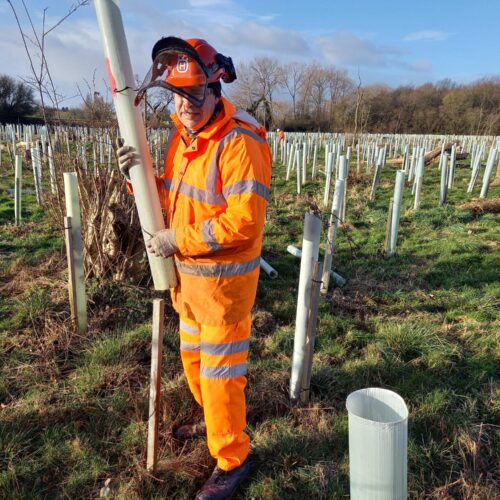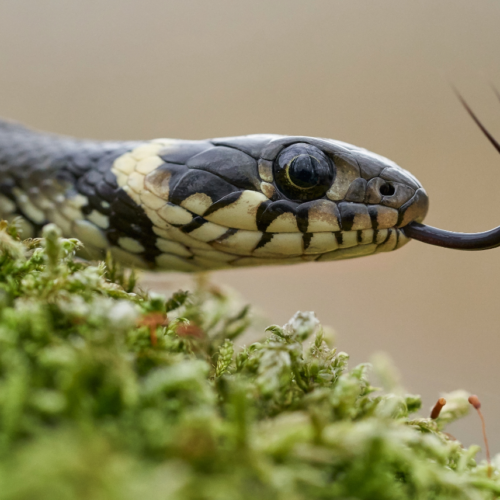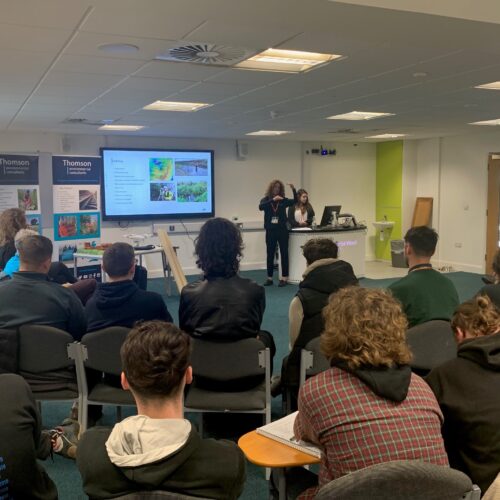Invasive species threaten biodiversity
Over 2,000 plants and animals have been introduced to Britain from all over the world. Most are harmless. Yet around 10-15% aggressively invade new areas and spread rapidly, threatening native wildlife and the environment.
These plants and animals, known as invasive non-native species, INNS or invasive species, can alter the functionality of entire ecosystems. They can directly change habitats, outcompete existing wildlife and introduce new diseases. They are one of the biggest causes of global biodiversity loss and species extinctions and can have a massive negative impact on the economy.
Invasive species and developments
Invasive non-native plant species can be a big problem for developers and the construction industry. It is estimated that they cost the UK and Ireland several billion pounds annually by direct economic impacts or through effects on ecosystem services.
The Wildlife and Countryside Act 1981 (as amended) provides the primary controls on the release and spread of invasive species in Great Britain. By law, landowners and developers are responsible for controlling the spread of INNS on their property. If the infestation is bad enough, they may be ordered to remediate the invasive species on site.
Thomson Habitats work to tackle invasive non-native species all around the UK, including those most commonly encountered on development sites.
Ways to tackle invasive species
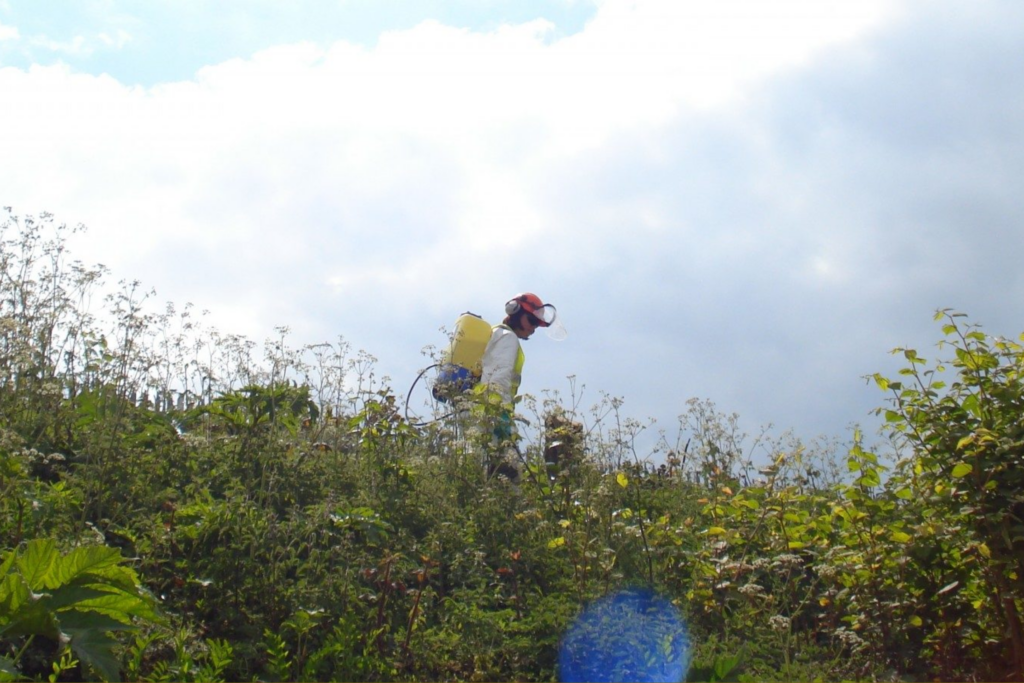
Thomson environmental consultants provide specialist invasive species consultancy, survey work, remediation and undertake a range of treatments and controls. These methods vary depending on the species, size of the infestation, development proposals and the potential ecological impacts associated with the invasive species.
Methods for removal include:
– herbicide spraying and stem cell injection
– hand-pulling and cutting
– excavation and on-site bunding or burial
– excavation and off-site disposal.
Aquatic invasive plants are also problematic and often need to be removed by specialist means such as weed-cutting boats or long-reach excavators. They can also be treated by herbicide applications by a suitably qualified person, but only with prior consent from the Environment Agency.
If invasive species are present on a proposed development site, an invasive species management plan is required, detailing the proposed actions of control. For some persistent species, such as Japanese knotweed, this can include ongoing monitoring and management plans over several years.
The challenges of invasive species management
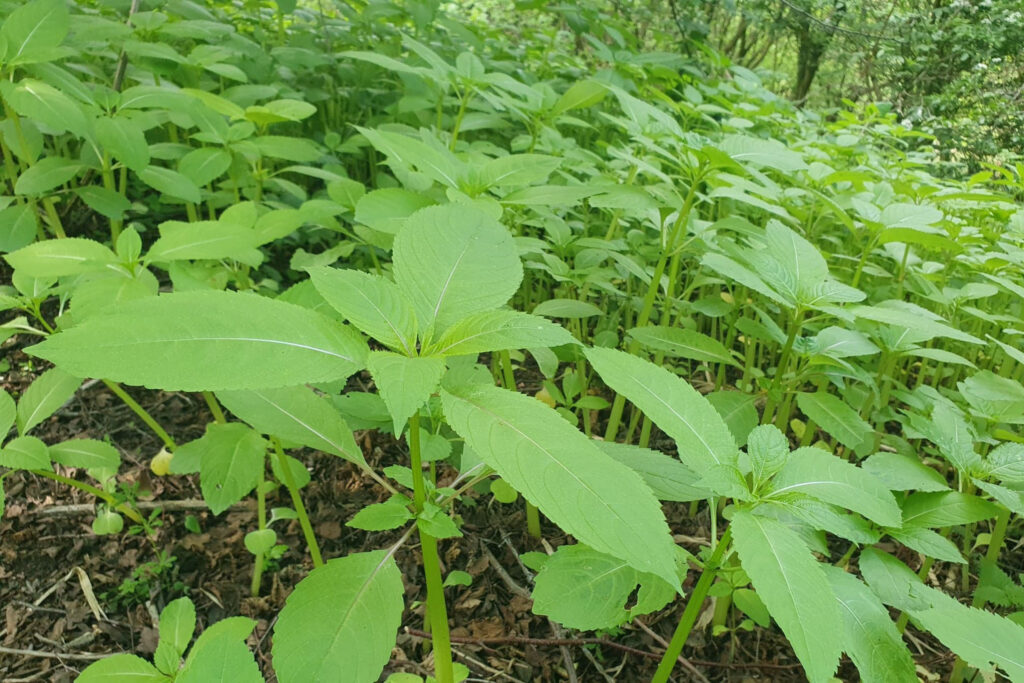
Before invasive species can be controlled, they must first be correctly identified. For some, such as rhododendron with large whorls of glossy green leaves that persist throughout the year, correct identification is straight-forward. But for others that die back in the autumn and winter months, are less well-known or have a similar appearance to other plants, correct identification can be tricky. To determine whether invasive species are on a site, an invasive species survey should be undertaken by a professional ecologist. These surveys can be combined with Preliminary Ecological Appraisals or protected species surveys.
Managing invasive species at the correct time of year is key for success! Herbicide spraying for example, is most effective during the plants growing season (Mar-Sept), when leaves can absorb the herbicide. Whilst hand-pulling and cutting Himalayan balsam should happen before the plant’s seed pods develop in June.
Disposal of invasive plants off-site can only be done by a registered waste carrier, who must dispose of the waste at an officially licensed tip. Herbicide spraying can only be done by an operator who holds a certificate of competence. If spraying is required near or in water, permission needs to be granted from the Environment Agency.
Another challenge is preventing the accidental spread of the invasive species. Maintaining the biosecurity of these sites is of paramount importance. Washing stations are often set up to clean boots and equipment prior to leaving the site.
How we can help
If you are concerned about invasive species on your property, it is best to seek expert advice. Thomson environmental consultants has a wealth of expertise in developing invasive species management plans and providing solutions. We have licenced and certified surveyors, and equipment to tackle any infestation, both large and small!
For free friendly advice on invasive species, or to obtain a quote, get in touch today.
Tel: 01483 466 000
Email: [email protected]



